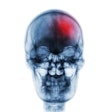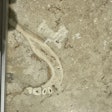Against the backdrop of last week's Congressional hearing into the future of forensic science, researchers from the University at Buffalo's (UB) Laboratory for Forensic Odontology Research in the School of Dental Medicine have published what is being called a landmark paper on bite mark analysis, the university announced.
The Congressional hearing focused on the findings of a National Academy of Sciences (NAS) report on the scientific basis of forensic disciplines. Among the pattern evidence fields (fingerprints, tool marks, etc.) that were reviewed in the report, bite mark analysis received critical commentary. During the hearing, Innocence Project co-founder Peter Neufeld introduced Roy Brown, wrongfully convicted on bite mark evidence and later exonerated through DNA analysis.
In anticipation of the NAS report, the new UB study published in the Journal of Forensic Sciences (July 2009, Vol. 54:4, pp. 909-914) challenges the commonly held belief that every bite mark can be perpetrator identified.
"Bite mark identification is not as reliable as DNA identification," said study lead author Raymond Miller, DDS, a UB clinical associate professor of oral diagnostic sciences, in a press release. "With DNA, the probability of an individual not matching another can be calculated. In bite mark analysis, there have been few studies that looked at how many people's teeth could have made the bite."
Dr. Miller's co-authors include UB's Peter Bush; Robert Dorion, DDS, an adjunct professor of oral diagnostic sciences; and Mary Bush, DDS, an assistant professor of restorative dentistry. Dr. Dorion is the editor of a comprehensive textbook on the subject of bite marks in forensic science, Bitemark Evidence: A Color Atlas and Text, and is currently the odontology section representative to the board of directors of the American Academy of Forensic Sciences.
The current study investigated three main questions: Is it possible to determine biter identity among people with similarly aligned teeth; is it possible to determine how many individuals from a larger sample might also be considered as the biter; and, if there is bite pattern distortion, is it enough to rule out a specific biter while still including a nonbiter?
To answer these questions, the researchers gathered 100 stone dental models (replicas of the dentition), which were measured and divided into 10 groups based upon the misalignment patterns of the teeth. After randomly selecting one model from each of the 10 groups, the researchers impressed bite marks on cadaver skin. After the bite marks were created, they were then photographed and the indentations were compared with the dentitions using overlays created with photographic software.
"Living bitten tissue may bleed or bruise," Dr. Miller said. "The initial bite mark indentations rebound shortly after infliction often leaving a diffuse bruising that may be difficult to measure accurately. The indentations produced in our study represented the best conditions for measurement."
The results indicated that when dental alignments were similar, distinguishing which set of teeth made the bites was difficult. Distortion noted in the bite marks allowed matches even from different alignment groups. Therefore, bite marks should be very carefully evaluated in criminal investigations in which perpetrator identity is the focus of a case, the researchers concluded.
"In the past 10 years, the number of court cases involving bitemark evidence that have been overturned led us to question the reasons for the erroneous bite mark identification," Dr. Miller said. "It's important to recognize the serious consequences of a misidentification for the accused, the victim, the families involved, the justice system, and the possibility that the perpetrator is still at large."



















